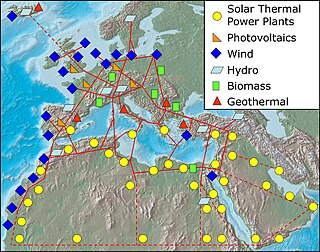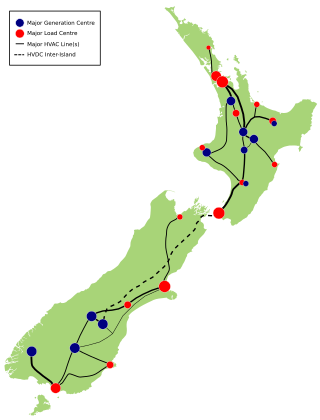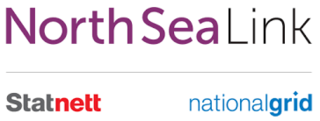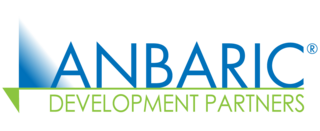| Champlain Hudson Power Express | |
|---|---|
| Location | |
| Country | Canada United States |
| From | Quebec |
| To | New York City |
| Ownership information | |
| Partners | Transmission Developers Inc. Blackstone Group |
| Operator | TransÉnergie |
| Construction information | |
| Expected | 2026 |
| Technical information | |
| Total length | 339 mi (546 km) |
| Power rating | 1,200 MW [1] |
The Champlain Hudson Power Express (CHPE) is a planned high-voltage direct current (HVDC) underwater and underground power cable project linking the Quebec area to the New York City neighborhood of Astoria, Queens. [1] Following completion of a review by the New York State Public Service Commission, construction began in 2022. The line is permitted and expected to be operational in 2026. [2] [3]
The venture, being developed by Transmission Developers Inc. (TDI), a Blackstone Group, L.P. (Blackstone) portfolio company, would carry clean energy—hydropower and wind power from eastern Canada—and feed it directly in the New York City electricity market. Construction costs for this project are estimated at US$2.2 billion for the section located in the State of New York. [4] The estimated total cost is US$4.5 billion. [3]
The Quebec section of the line would be built and operated by TransÉnergie, the transmission arm of Hydro-Québec. [5]
Power rates in the New York metro area and Long Island have long been among the highest in the U.S. [6] and according to the U.S. Department of Energy, New York City is the "epicenter" of grid congestion in the eastern United States. The congestion problem in the New York City area and on Long Island is compounded by the fact that the area uses two-thirds of the state's electricity while most generation and import capacity is located upstate and near the Great Lakes. [7]
Over the years, a number of proposals to increase transmission capacity to the New York City and Long Island markets have encountered hostile reactions and determined opposition from environmental groups and communities along the planned paths.[ citation needed ] For instance, construction of the Cross Sound Cable, a 328-MW submarine DC cable linking Connecticut to Long Island via the Long Island Sound, was authorized in 2002, but its commissioning was delayed for a year because of a dispute involving the promoter and the state of Connecticut. [8] Another project, the Neptune Regional Transmission System has been operational since 2007. The 65 miles (105 km) 500 kV cable connects New Jersey and Long Island. It runs buried in the Atlantic Ocean and has a capacity of 660 megawatts. [9] A proposed HVDC line, West Point Partners, that would have interconnected the grid from a substation in Athens, New York to a substation near the Indian Point Energy Center was tabled when the landowner where the southern converter station would be located, Con Edison, sold the land to the Village of Buchanan. The Village of Buchanan then sold the rights to use the land to the natural gas company Spectra for their new proposed natural gas pipeline. [10]
However, a 400 kilovolts DC line 306 kilometres (190 mi) between the Rock Tavern substation, 60 miles north of New York, and the Marcy hub in central New York, has been marred by controversy. Launched in 2006, [11] the proposed New York Regional Interconnect (NYRI) had a 1,200 megawatts capacity. It was shelved by its developers in early 2009 after two years of staunch opposition from several groups concerned by the impact of pylons along the proposed route. [12]
TDI, whose board is chaired by Brian Kubeck, is backed by Blackstone and was announced on February 23, 2010. [13] Since then, the CHPE Project has made significant progress in terms of securing the governmental approvals. The Federal Energy Regulatory Commission authorized the Project developers to sell transmission rights at negotiated rates in July 2010. [14] Less than a year later, the New York State Department of State issued its Coastal Zone Consistency determination for the project.[ citation needed ]
On February 24, 2012, the parties participating in the detailed review of the project being conducted before the New York State Public Service Commission (PSC) announced that they had reached a settlement of all of the issues in the proceeding. [15] On April 18, 2013, the New York State Public Service Commission granted the CHPE project a Certificate of Environmental Compatibility and Public Need.[ citation needed ]
The CHPE project tries to avoid difficulties encountered by other proposals by presenting itself as an "environmentally benign" solution. By avoiding overhead wires and 10 story high towers, the promoter hopes to avoid the fate of previous projects, such as NYRI. The initial project involved two 1,000 MW lines, the first one to New York, and the second going all the way to Connecticut, via the Long Island Sound. The construction cost for the two lines and converter stations in the U.S. was estimated at $3.8 billion. [16] The line to Connecticut was cancelled in July 2010. [17]
According to the company's president and CEO, Donald Jessome, choosing an underwater route avoids " disrupt[ing] communities with overhead transmission". The developer says that the cable also provides economic and environmental benefits to the state, bringing low-cost and clean power to critical load centers. [16]
The Atlantic chapter of the Sierra Club has asked its members to oppose this project. New York wind energy producers currently cannot get their electricity carried to New York City. It is the Sierra club's contention that CHPE will stop any chance of New York City getting locally produced wind power and in general dampen the market for local alternative energy production. [18]
The proposed cable would have a length of approximately 339 miles (546 km) [3] between the Canada-U.S. border and its southern terminal, in New York City. The two 5-inch (127 mm) cables would be buried at varying depths of 3 feet (91 cm) under Lake Champlain and the Hudson River, Harlem, and East Rivers.[ citation needed ]
The cables would cross the border under Lake Champlain and would run southward to the Town of Dresden north of the Village of Whitehall. On its way to the Hudson, the cables would be routed briefly along State Route 22 and then parallel the Delaware & Hudson Railroad right-of-way to Rotterdam, at which point it accesses the right-of-way of a CSX Transportation rail line, continuing southwards until it enters the Hudson River in the Town of Catskill.[ citation needed ]
Once the cables are in the Hudson River, they continue south to the Town of Stony Point, where the CSX railroad right-of-way is again relied on until the cables re-enter the Hudson in the Town of Clarkstown. The cables next make landfall in the Harlem River Intermodal Yard in the Bronx, traverses the East River to reach Queens, and terminates at a converter station on the large energy campus in the Astoria neighborhood in the New York City borough of Queens.[ citation needed ]
In an economic analysis filed on behalf of the promoter to the New York Public Service Commission in July 2010, London Economics International estimates that the projected line would save New York customers $8.1 billion (2010) on their electricity bills over the first 10 years of operations, between 2015 and 2024. [19] In addition, the proposed cable would have positive impacts on the electricity grid, since power carried by the cables could force the retirement of older, uneconomic power plants in New York. [19]
The planned line, which would carry 7.64 terawatt-hours of renewable electricity per year, would lower SO
2 emissions by 6,800 tonnes, NO
x emissions by 10,800 tonnes and CO
2 emissions by nearly 37 million tonnes during the first decade of operation. [19]
The CHPE is expected to create 1,400 jobs directly and thousands of indirect and induced jobs. [20] The Project will also reinforce the reliability of New York's bulk power delivery system.[ citation needed ]
The proposed CHPE project has been granted permits by the New York State Public Service Commission, and the final Environmental Impact Statement (EIS) was issued by the U.S. Department of Energy for the project as of 2014. [21] [22]
According to the promoter, the Quebec section of the line would start at a DC conversion station to connect with Hydro-Québec TransÉnergie's Hertel substation (735-315 kV) near La Prairie, and would reach the junction point at the international border in Lake Champlain. [5]
The initial reaction of Hydro-Québec (HQ) and the Quebec government to the CHPE project was mixed, considering the 400 to 500 million Canadian dollars price tag for the Quebec section of the line. In addition, the CHPE could be seen as competing with a proposed 1,200 MW HVDC line to be built by the company in association with NSTAR and Northeast Utilities, which was expected to increase exports of Quebec hydropower to the neighboring New England states. [23] [24] Reflecting on the project in April 2010, Hydro-Quebec's CEO, Thierry Vandal, stated that it was technically "very complex" and "very costly". [25]
Despite its initial reaction, the Quebec utility intervened in support of the proposal before the FERC in May 2010, [26] and the PSC in March 2012. [27] [18] In the March 2012 letter, [28] HQ cited the CHPE project's potential to bring large quantities of renewable energy to downstate New York at no cost to New York ratepayers and the CHPE project's progress before the PSC as the reasons for entering into "active discussions" with TDI.[ citation needed ]
Late in January 2013, Hydro-Québec formally filed a project notice to build the Quebec part of the line to the Quebec Minister of Sustainable Development, Environment, Wildlife and Parks, Yves-François Blanchet. The ±320 kV power line would start at the Hertel transmission station, near La Prairie, to reach the US border on the shore of Lake Champlain. The project includes the deployment of a DC terminal at Hertel TS, but in contrast to the US part of the line, Hydro-Québec excludes running the line in the Richelieu riverbed. [29]
After a period of public consultation, HQ came back with a new 58-kilometer path running alongside a 735 kV power line, Autoroute 15, Quebec Routes 202, 221 and rural roads to reach the international border west of the Saint-Bernard-de-Lacolle / Rouses Point border crossing. [30]

Electric power transmission is the bulk movement of electrical energy from a generating site, such as a power plant, to an electrical substation. The interconnected lines that facilitate this movement form a transmission network. This is distinct from the local wiring between high-voltage substations and customers, which is typically referred to as electric power distribution. The combined transmission and distribution network is part of electricity delivery, known as the electrical grid.

A high-voltage direct current (HVDC) electric power transmission system uses direct current (DC) for electric power transmission, in contrast with the more common alternating current (AC) transmission systems.

Hydro-Québec is a Canadian Crown corporation public utility headquartered in Montreal, Quebec. It manages the generation, transmission and distribution of electricity in Quebec, as well as the export of power to portions of the Northeast United States. More than 40 percent of Canada’s water resources are in Quebec and Hydro-Québec is the fourth largest hydropower producer in the world.
NSTAR was a utility company that provided retail electricity and natural gas to 1.4 million customers in eastern and central Massachusetts, including the Boston urban area. NSTAR became a subsidiary of Northeast Utilities in April 2012. In February 2015, Northeast Utilities and all of its operating companies became one large company known as Eversource Energy.
Eversource Energy is a publicly traded, Fortune 500 energy company headquartered in Hartford, Connecticut, and Boston, Massachusetts, with several regulated subsidiaries offering retail electricity, natural gas service and water service to approximately 4 million customers in Connecticut, Massachusetts, and New Hampshire.

The Manitoba Hydro-Electric Board, operating as Manitoba Hydro, is the electric power and natural gas utility in the province of Manitoba, Canada. Founded in 1961, it is a provincial Crown Corporation, governed by the Manitoba Hydro-Electric Board and the Manitoba Hydro Act. Today the company operates 16 interconnected generating stations. It has more than 527,000 electric power customers and more than 263,000 natural gas customers. Since most of the electrical energy is provided by hydroelectric power, the utility has low electricity rates. Stations in Northern Manitoba are connected by a HVDC system, the Nelson River Bipole, to customers in the south. The internal staff are members of the Canadian Union of Public Employees Local 998 while the outside workers are members of the International Brotherhood of Electrical Workers Local 2034.
The Cross-Sound Cable is a 25-mile long bipolar high-voltage direct current (HVDC) submarine power cable between New Haven, Connecticut and Shoreham, on Long Island, in New York, United States.

The Quebec – New England Transmission is a long-distance high-voltage direct current (HVDC) line between Radisson, Quebec and Westford Road in Ayer, Massachusetts. As of 2012, it remains one of only two Multi-terminal HVDC systems in the world and is "the only multi-terminal bipole HVDC system in the world where three stations are interconnected and operate under a common master control system".
Directlink (Terranora)Interconnector is a mixed buried and above ground 59 kilometre (37 mi) High Voltage Direct Current (HVDC) electricity transmission cable route from near Lavertys Gap (28°34′15″S153°27′8″E), 5 kilometres (3.1 mi) Southwest of Mullumbimby, New South Wales and Bungalora (28°15′20″S153°28′20″E) & connected via a 3.5km (2.2mi) AC Overhead Transmission Line to the NorthEast to the Terranora Electrical Substation (28°14′28.3″S153°30′12.7″E) @ Terranora, New South Wales New South Wales in Eastern Australia. The DC cables alternate between above ground in a galvanised steel trough and below ground with depths up to 1m.

A submarine power cable is a transmission cable for carrying electric power below the surface of the water. These are called "submarine" because they usually carry electric power beneath salt water but it is also possible to use submarine power cables beneath fresh water. Examples of the latter exist that connect the mainland with large islands in the St. Lawrence River.

A super grid or supergrid is a wide-area transmission network, generally trans-continental or multinational, that is intended to make possible the trade of high volumes of electricity across great distances. It is sometimes also referred to as a "mega grid". Super grids typically are proposed to use high-voltage direct current (HVDC) to transmit electricity long distances. The latest generation of HVDC power lines can transmit energy with losses of only 1.6% per 1,000 km.
Hydro-Québec is a government-owned public utility established in 1944 by the Government of Quebec. The company is in charge of the generation, transmission and distribution of electricity across Quebec. Its head office is located in Montreal.

The National Grid is the nationwide system of electric power transmission in New Zealand. The grid is owned, operated and maintained by Transpower New Zealand, a state-owned enterprise, although some lines are owned by local distribution companies and leased to Transpower. In total, the national grid contains 11,803 kilometres (7,334 mi) of high-voltage lines and 178 substations.
NorGer was one of two planned electricity cables between Germany and Norway. The other proposed project was NordLink, which Statnett decided to proceed with in 2015, and NorGer was cancelled.

The North Sea Link is a 1,400 MW high-voltage direct current submarine power cable between Norway and the United Kingdom.
Shetland HVDC Connection is a high-voltage direct current submarine power cable under construction to connect Shetland to the British mainland.

Anbaric Development Partners (Anbaric) is an American electric power transmission and storage development company located in Wakefield, Massachusetts. The company develops smart grid, renewable energy, and large-scale electric transmission projects which use high-voltage direct current (HVDC) technology for clients in the United States and internationally.

The Juan de Fuca Cable Project is a proposed 550 MW, 150 kV high-voltage direct current (HVDC) submarine power cable connection running 19 miles (31 km) under the Strait of Juan de Fuca between Port Angeles, Washington, and Victoria, British Columbia. The project's final environmental impact statement was completed in October 2007, and a presidential permit issued in June 2008.
The Western Isles HVDC connection is a proposed 1.8GW HVDC submarine power cable to connect the Isle of Lewis to the Scottish mainland.
{{citation}}: CS1 maint: location missing publisher (link){{citation}}: CS1 maint: location missing publisher (link){{cite news}}: CS1 maint: unfit URL (link)